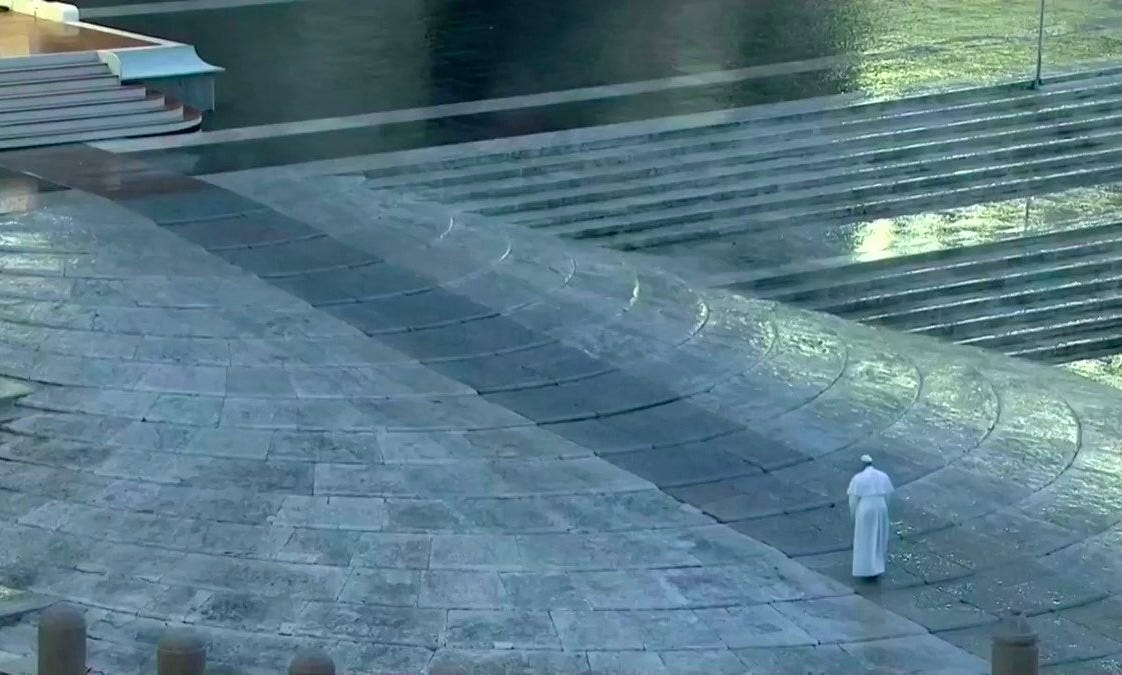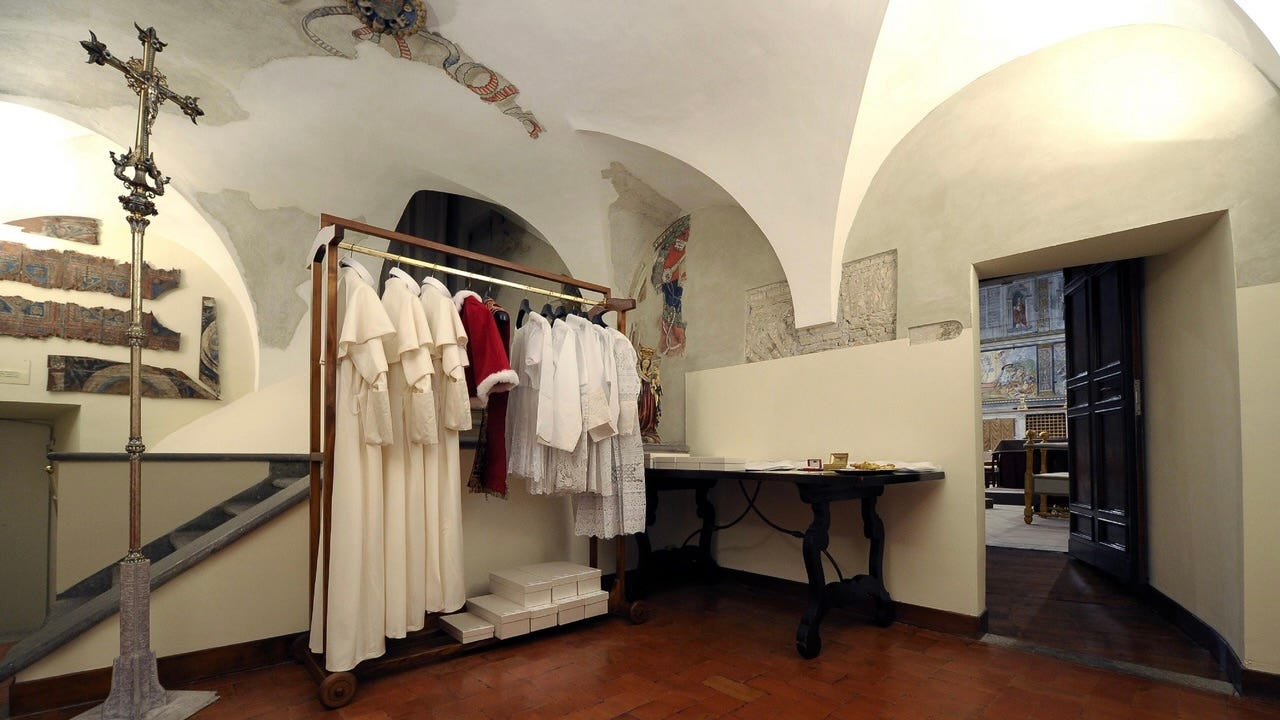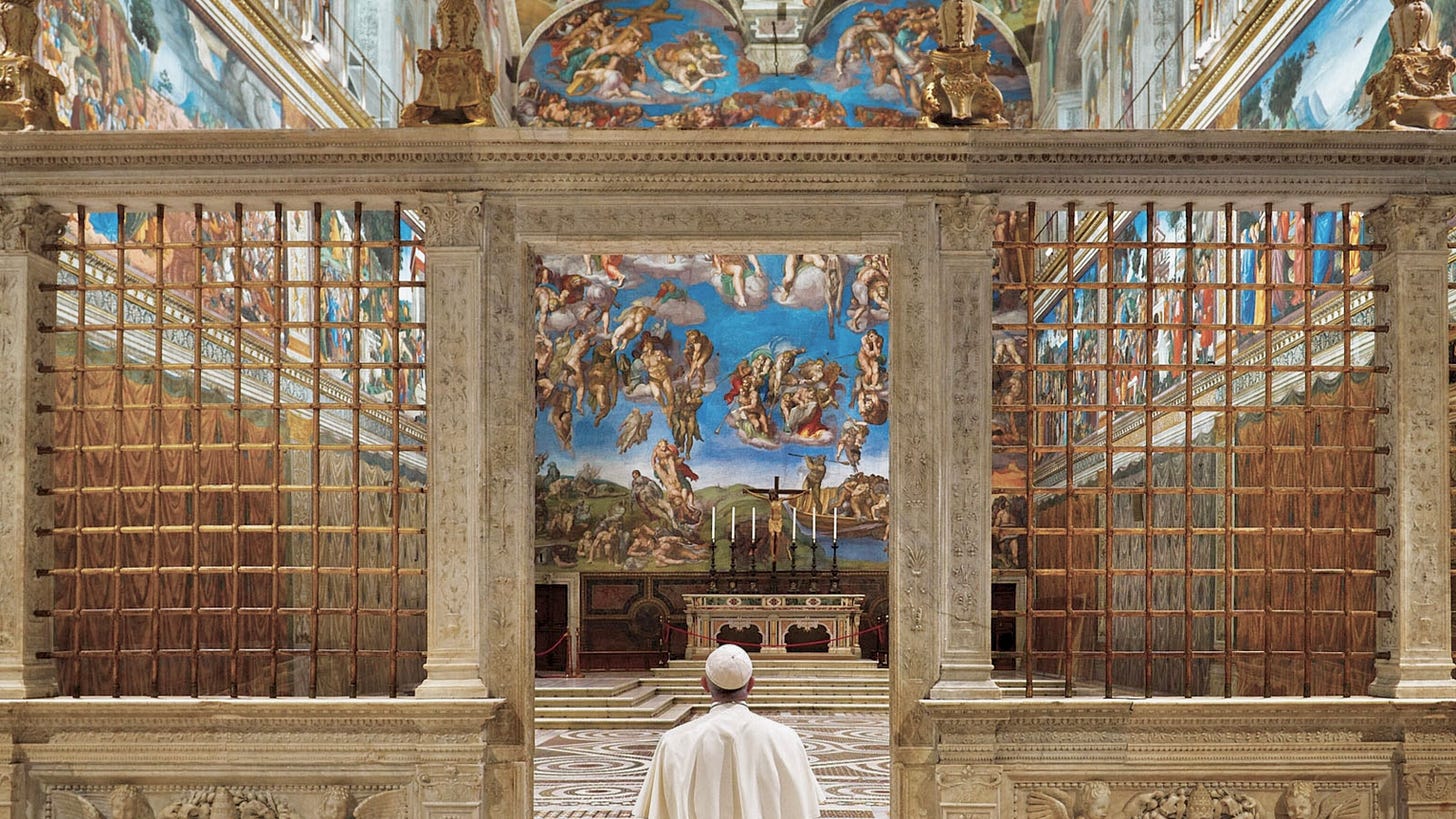Why You Need to Slow Down
Lessons from the Vatican's Room of Tears
The world erupts as white smoke rises over the Vatican.
Crowds flood St. Peter’s Square, cheering and weeping. Journalists scramble for position. Choirs prepare to sing, and over a billion Catholics worldwide eagerly await the name of their new shepherd. At the heart of it all stands a man who, only moments ago, was one among many. Now he is the Pope.
But before stepping out onto the balcony to face the thunder of the crowd and the flashes of the cameras, he is led away — not into a grand throne room, but into a small, plain chamber just behind the Sistine Chapel.
It’s called the Room of Tears.
There, alone for a few minutes, the newly elected pope changes into the white cassock that will mark his new identity. But more often than not, he does something else, too.
He weeps.
He does so not out of fear or a sense of unworthiness — though he will inevitably wrestle with both later — but simply because the moment is real. What transpired in Conclave is now final and irrevocable. For the new pope, his old life has ended and a new one has begun. And for a few stolen minutes, this quiet space gives him room to let it all sink in.
Although it’s an experience almost none of us will know personally, this moment holds a powerful lesson for us all — and reveals much about life’s beginnings, endings, and the importance of slowing down…
Reminder: you can support our mission and get tons of members-only content for a few dollars per month:
Full-length articles every Wednesday and Saturday
Members-only podcasts and exclusive interviews
The entire archive of great literature, art, and philosophy breakdowns
The Room of Tears
The Room of Tears sits just off the Sistine Chapel, accessible by a narrow staircase. It contains little more than a few chairs, a rack of white robes, and a mirror. Yet despite its simplicity, it is one of the most important rooms in the Vatican.
Its purpose, at least on paper, is functional — to give the newly elected pope a place to change. But over time, it has taken on a deeper role as a space where a man becomes something more than he was. For in the minutes after the vote, while the crowd outside waits and the cameras roll, this room offers the pontiff solitude. It is the last private moment before a life of total public exposure. And it becomes the first moment in which the new pope begins to inhabit the role he’s been given.
While tears, stunned silence, and whispered prayers are to be expected, the point isn’t emotional breakdown. Rather, it is the chance to fully experience a major turning point, a line of demarcation between what was and what is now.
This is something we all need more than we realize — but why?
Marking the Moment
All of us encounter turning points in life: the birth of a child, the loss of a parent, a marriage, a move, a graduation. These events mark the end of one chapter and the beginning of another. Some come with fanfare like ceremonies, applause, or religious rituals, but others pass quietly, known only to you.
In either case, you are often pushed to move too quickly. Life demands you keep going — to return the emails, make the appointments, plan the next thing. What gets lost is the chance to feel the transition. To sit with it and let it shape you.
But moments like these deserve to be commemorated, not primarily with pomp, but with presence. Without slowing down and being present, you can’t process what’s really happening. You can’t absorb the meaning of what’s ending, or prepare yourself for what’s ahead.
Slowing down, however, doesn’t mean simply withdrawing from responsibility. On the contrary, it’s how you learn to carry your new responsibilities with strength and purpose. The moments that initiate change — like a child placed in your arms, a set of vows spoken, or a parent’s final breath — are not simply checkpoints on a timeline, but moments that forever shape the course of your life.
In other words, they are events of massive significance. And like the pope in the Room of Tears, you need time and space to respond to them properly and prepare to move forward.
Finding Your Place of Solitude
Fortunately, you don’t need to be in the Vatican to find your own place of solitude. And while silence and scenic beauty are great, even they aren’t prerequisites for you to reflect on what’s happening around you. All you really need is intention, and a pause long enough to let the moment register.
It might be a few minutes in your car before walking into a new job, or a walk you take alone on the evening before your wedding. It might be at church, at home, or in whatever quiet nook you like to call your own.
In any case, these modern “Rooms of Tears” are places that offer you the stillness to process the end of one chapter of your life, and the beginning of another. They are essential because they offer pause — the very pause you need to avoid rushing through transformative moments as they are in the process of shaping you.
Slow Down & Savor
After his election to the papacy, Pope Francis admitted that what he most longed for was the freedom to visit a pizzeria unnoticed. And though that may sound funny, it’s actually a recognition of something deeper — a massive change in his life that he no doubt reflected on during his moment of silence in the Room of Tears.
We need these moments of reflection too. Not because we carry the burdens of the papacy, but because we live in a world that pushes us to move faster, speak sooner, and react instantly — even when something incredibly profound is unfolding right in front of us.
The beginning or end of a chapter in your life deserves more than a glance. It deserves time to settle in your mind and in your body: time to register what’s changing, what’s being asked of you, and who you’re now called to be.
Solitude itself won’t make your decisions for you, but it does give you the clarity to face life’s challenges with presence and resolve. It prepares you to live the next chapter fully, with a deep understanding of both what it is and why it matters.
So the next time you come to a major point of transformation in your life — whether a joy, a loss, or simply a change from the status — take time to slow down and savor it. Remember that the Room of Tears exists for a reason, and that your passage through it is the first step in becoming who you’re meant to be.
P.S. Today’s email was adapted from the final chapter of Evan Amato’s book “Keys to Life”. If you want to explore more time-tested and pope-approved tips for living the good life, you can learn more about the book and pick up your copy here.
Thank you for reading!
Remember, you can support us and get members-only content every week: great literature, art, and philosophy breakdowns.
Paid readers can access our *entire* archive of premium articles right here.
This Saturday, we break open the foundational text of all Western literature — the Iliad — and reveal its moral lessons that still hold true, thousands of years later...








This is a beautiful article that I wish I could have read 50 years ago. The majority of my life has flown by in a blur. Now at 78, I’m looking back at all the transformative moments in my life and regretting my lack of awareness of their impact on my decisions and actions. Wish I could join this site and read/learn lmore.
I enjoyed this piece. I had two synchronicities today motioning me to slow down and mark a tremendously huge transition in my life, shedding the old and stepping into a being very unknown to me.